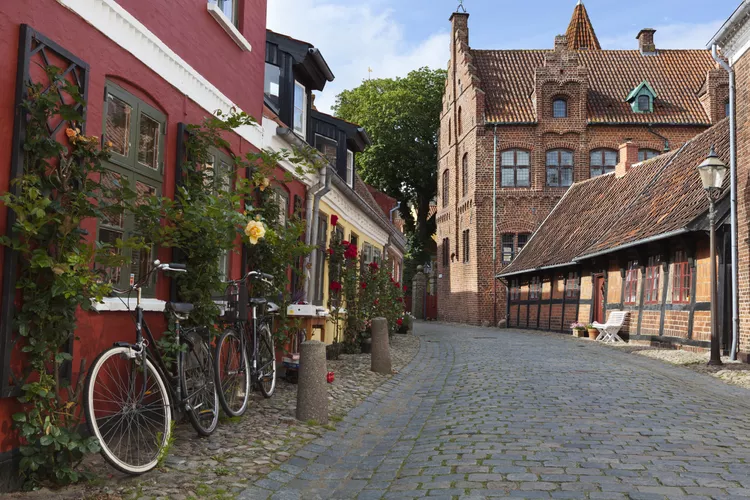Summary of Jutland
Jutland, a low-lying peninsula in western Denmark, separates the North and Baltic seas and borders Germany to the south. Home to about 2.5 million Danes across its 11,500 square miles of land, Jutland’s biggest cities include Aarhus, Aalborg, Esbjerg, Randers, Kolding, and Ribe. The peninsula is also known as the Cimbrian or Cimbric peninsula.
Many of Jutland’s outdoor activities thrive due to its mostly flat and even topography. Popular sports and adventures in Jutland include windsurfing and cycling, as the terrain is well-suited for bicycles and the strong gusty Danish winds provide an exhilarating experience for windsurfers.
Topography
Jutland is characterized by its low-lying landscape, with an average altitude of about 100 feet. The highest point in the country, Yding Skovhoj in southeastern Jutland, reaches only 568 feet. Some regions, such as the southern coast of Lolland, are shielded from flooding by dikes.
The peninsula, similar to much of Denmark, features a glacial deposit over a chalk base. It consists of small hills, moors, ridges, hilly islands, and raised sea bottoms scattered across the landscape, alongside downs and marshes on the west coast.
Home of Legos
Travelers to Jutland can experience a variety of attractions, including amusement parks like the original Legoland in Billund. The region also boasts museums, annual events, pristine beaches along the coastline, and numerous local pastimes and traditions. Lego, a famous brand of small plastic construction bricks for children, began in a carpentry workshop in Billund in 1932. Moreover, Billund is home to the region’s main airport.
Major Cities
Aarhus stands as Jutland’s unofficial capital and is the most populous city. Located on Jutland’s east coast, it is Denmark’s second-largest city, following Copenhagen. Each year, the European Union designates two cities as “European Capital of Culture,” and Aarhus received this honor in 2017, thanks to its diverse array of cultural events and attractions.
Herning serves as a major traffic junction for Western Jutland. Aalborg acts as both a cultural hub and port town in northern Jutland. For history enthusiasts, a visit to Ribe—Denmark’s oldest city—offers a glimpse into the past.
A History of Conquest
The name Jutland is derived from the Jutes, one of the three most formidable Germanic tribes during the Nordic Iron Age, around the sixth and fifth centuries B.C. From their homeland in Jutland, the Jutes, along with the Angles and Saxons, migrated to Great Britain around 450 A.D., marking the beginning of modern Western civilization.
The Saxons inhabited the southernmost portion of the peninsula until they were subdued by Charlemagne in 804 after a prolonged conflict. In 965, the Danes united, including Jutland, and the Code of Jutland—enacted under Valdemar II of Denmark in 1241—established a standardized set of laws governing Jutland and other Danish settlements.
One significant historical event is the Battle of Jutland, which took place between the British Royal Navy and the Imperial German Navy from May 31 to June 1, 1916, during World War I. This encounter ended in a stalemate, with the British losing twice as many ships and men yet managing to hold off the German fleet.





